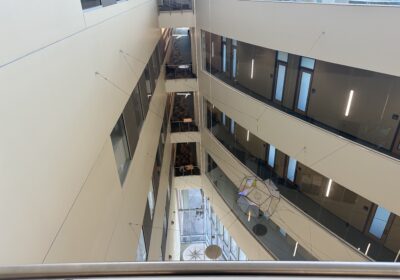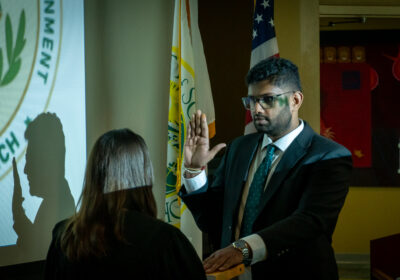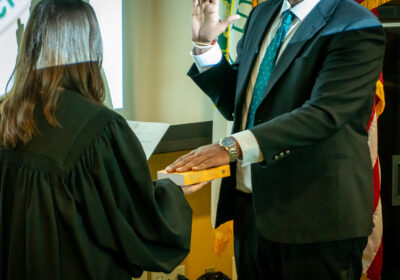USF’s soon-to-be demolished dorms were home to pranks and community life

Surrounded by oak trees and within sight of the Marshall Student Center, the Argos Center was the heart of early community life at USF.
A new plan would bring nine new dorm buildings and transform the aged Argos Center, now just a minute walk from Castor Beach.
Support for the redevelopment began in a February Board of Trustees Finance Committee meeting.
Alpha (Kosove), Beta and Gamma (Betty Castor) Halls have seen over 54,000 student residents over the last sixty years. But the buildings have grown old and there is a demand for the modernized dorms that have filled the Village on the north side of campus.
Related: USF to demolish oldest dorms to make way for new housing – The Oracle
The proposal would bring a “modern design” and “vibrant community gathering space” to students, according to the meeting.
Opening USF’s first dorms
Alpha Hall, now known as Kosove Apartments, became USF’s first co-ed dorm in 1961 after the university raised money through the “Dollars for Dorms” campaign, according to a 2014 Oracle article.
Over the next several years, the Argos Center would grow and host shenanigans, records and pranks on fellow students.
The center included a two-story complex, referred to as the “central core” in a March 5, 1962 Tampa Times Campus Edition article. It included a dining hall, private study lounges and party lounges.
This building was connected to Alpha Hall and two additional residence halls by covered walkways to complete the Argos Center.
Beta Hall was completed in 1962 and brought USF’s residential capacity to 850 students.
Laundry services were also moved into Alpha Hall rather than its “inconvenient location” inside the bookstore around this time, according to a Jan. 22, 1962 Tampa Times Campus Edition article.
The all-female dorm Gamma Hall, now known as Betty Castor Hall, was finished a year later, according to a Tampa Historical article. The three dorms currently house 912 beds.
Gamma Hall’s slang
While Gamma Hall’s female residents faced curfew and other strict rules, the women adopted their own set of slang words. Their slang ranged from “feeding the boa constrictor” – meaning to vacuum their rooms – and “smudgin” – referring to kissing, according to an Oct. 19, 1964 Tampa Times Campus Edition article.
Alpha Hall birthday celebration
Meanwhile, in Alpha Hall, male residents blindfolded a student celebrating his birthday and dropped him off in the elevator of Gamma Hall, according to a Nov. 23, 1966 Oracle article. There were no rules on how to handle the situation and the RA on duty became “quite upset.”
Dealing with RAs
Resident assistants (RAs) were often on the receiving end of shenanigans. In a Feb. 11, 1970 Oracle article, sports writer Mike Stroker wrote about how residents dealt with RAs and neighbors they didn’t like.
“The ‘chosen one’ may be awakened in the idle of the night by a gang of hysterical man-eaters, who proceed to carry him down to the pool,” Stroker wrote.
The “chosen one,” often RAs or students who study too much, would be dropped into the pool.
Shaving cream fights
The shenanigans in the 70s didn’t stop there.
Shaving cream fights were a common occurrence, according to the article. One started on the fourth floor of Beta Hall and “oozed its way down to the third floor.”
Unable to be stopped by RAs or even campus police, Beta residents challenged their Alpha Hall neighbors, prompting the fight to spread across campus.
“The campus police could only observe in amazement,” Stroker wrote.
War on food waste
The mysterious Captain Ecology was a frequenter of the Argos cafeteria in 1975.
The “ unidentified student wearing an ecology tee-shirt with that appellation emblazoned on the back” was part of a program to reduce food waste by students, according to a Jan. 17, 1975 Oracle article.

For six weeks, Captain Ecology walked through the dining hall, giving out prizes to students who cleared their plates and blew an air horn at those who failed to do so.
Scuba record
In 1980, the Argos pool hosted 85 divers from USF’s scuba club, which broke the record for most consecutive hours of underwater backgammon played with 125 hours logged. The underwater backgammon marathon was part of a fundraiser for USF’s United Way campaign, according to a Nov. 10, 1980 Oracle article.

Dorm nicknames
Several dorms were given a nickname by students in 1978.
The all-male Beta Hall became known as “the Zoo” due to its “inner appearance and atmosphere,” as referenced by an Oct. 20, 1978 Oracle article.
Some Beta residents disagreed, saying the dorm was more like an amusement park.

Renovations
Renovations of the first dorms in the Argos Center began in 1993.
In response to student demands in 1998, Alpha Hall was remodeled as the apartment-style dorms Kosove residents know today, according to a Housing System Facilities report.
Related: USF apartment-style dorms will not be available to first-time-in-college students
Student affairs announced their intention to rename Gamma Hall in 1999 after Betty Castor, USF’s fifth and first female president, who was retiring the same year, according to a Sept. 10, 1999 Oracle article.
Betty Castor Hall underwent renovations in 2001 and Beta was remodeled in 2004 to create additional housing for freshmen.
Just two years prior to Beta’s update, students were sleeping on beds in study areas and lounges to accommodate “an excess of 230 students who were guaranteed housing by Residence Services,” according to an Aug. 29, 2002 Oracle article.
Chronology of the University of South Florida by Andy Huse was used to help compile information.







